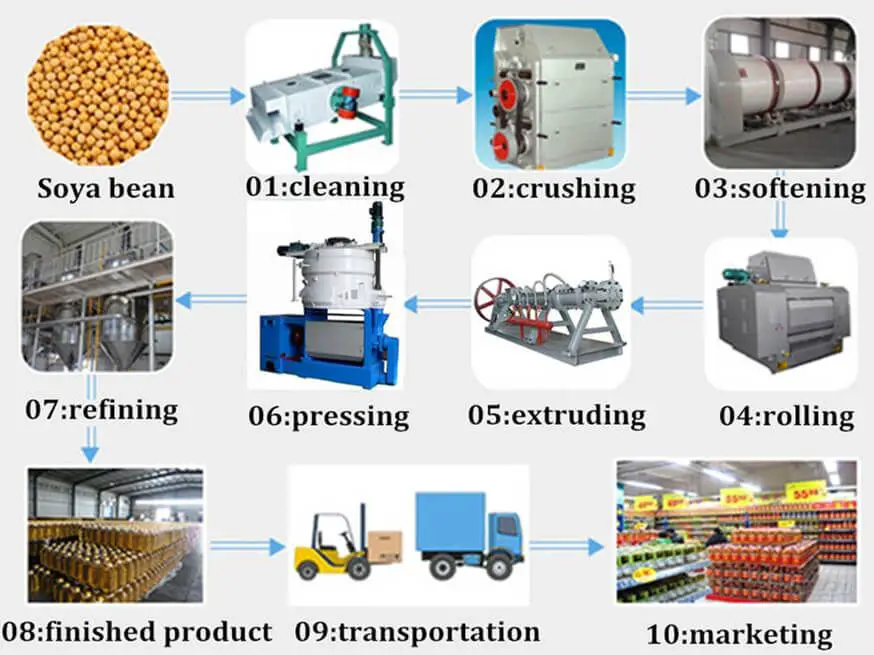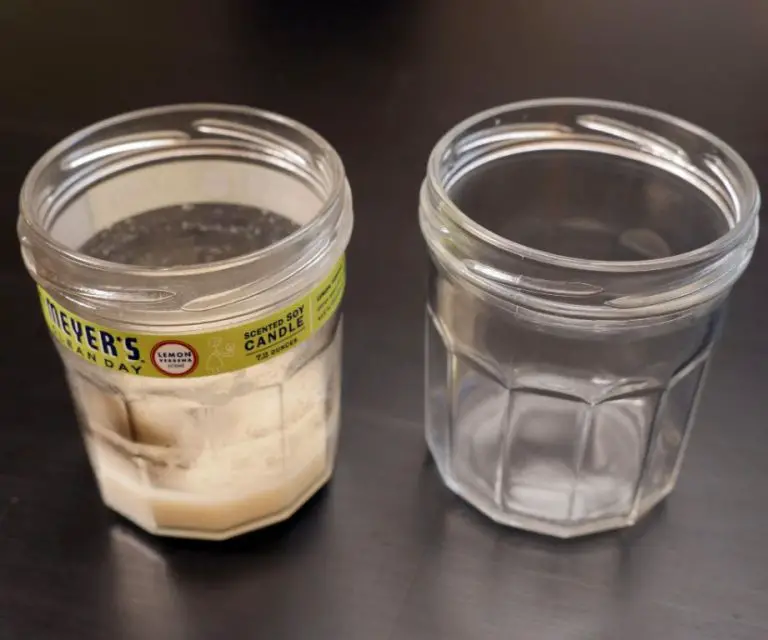Are Soybeans The Same As Soy?
Introducing Soybeans
Soybeans (Glycine max) are a species of legume native to East Asia. Soybeans are an annual plant that grows to around 2-6 feet tall and produces edible beans. Soybeans have a long history of cultivation in China, with references to their use dating back as far as the 11th century BC. The soybean is considered one of the first crops domesticated in China. Soybeans spread from China to other parts of Asia, with earliest written records in Japan around the 3rd century AD. Soybeans were then introduced to North America in the 18th century.
Botanically, soybeans belong to the pea family (Fabaceae). The soybean plant grows erect with branching stems and trifoliate leaves. Soybean flowers are small and purple or white in color. The fruit is a hairy pod that contains 2-4 seeds, which are the harvested soybeans. Soybean seeds come in a variety of sizes and colors, including black, brown, yellow, and green. Soybeans are unique among legumes because they contain significant amounts of oil, around 18-20%, which makes them an important oilseed crop.
Source: https://en.wikipedia.org/wiki/Soybean
Soybean Production
The United States is the world’s leading soybean producer, accounting for over 30% of global production in recent years. According to USDA data, U.S. soybean planted acreage reached 77.2 million acres in 2012, with a farm cash value of $43.7 billion for soybean production that year.https://www.ers.usda.gov/topics/crops/soybeans-and-oil-crops/related-data-statistics/
Other major soybean producing countries include Brazil, Argentina, China, and India. In 2020, Brazil produced 134 million metric tons, Argentina 48 million tons, China 18.5 million tons, and India 11.8 million tons of soybeans.https://ipad.fas.usda.gov/cropexplorer/cropview/commodityView.aspx?cropid=2222000
Global soybean production has steadily increased over the past few decades. Total world production reached 388 million metric tons in 2020/21. The United States, Brazil, and Argentina account for over 80% of global soybean exports.https://www.statista.com/statistics/263926/soybean-production-in-selected-countries-since-1980/
Soybean yields have also increased significantly thanks to breeding improvements and more efficient farming practices. Average U.S. soybean yields rose from around 25 bushels per acre in the 1960s to over 50 bushels per acre in recent years.
Soybean Uses
Soybeans have many uses, with the primary uses being animal feed, oil extraction, and food products for human consumption. According to the North Carolina Soybean Producers Association (https://ncsoy.org/media-resources/uses-of-soybeans/), over 70% of soybean meal is used for animal feed. Poultry and swine are the main livestock fed soybean meal, as it is a cost-effective protein source. Soybean oil is another major product, used for both human consumption and industrial purposes. According to the United Soybean Board (https://www.unitedsoybean.org/hopper/what-are-soybeans-used-for/), soybean oil accounts for 61% of edible fats and oils consumed in the United States. Food uses for human consumption include products like tofu, soy milk, protein powder, meat substitutes, baked goods, infant formula and more. The versatility of soybeans allows them to be processed into many healthy and convenient foods.
What is Soy?
Soy refers to soybeans, a type of legume native to East Asia. Soybeans are an important global crop and a common source of plant-based protein. There are many different edible soy products derived from the soybean including soy milk, tofu, tempeh, edamame, soy sauce, and soybean oil. Soy is a complete protein, meaning it contains all nine essential amino acids that humans need to obtain from food sources.
Some of the most common types of soy foods include:
- Tofu – Made from condensed soy milk pressed into solid white blocks. Tofu is a versatile meat substitute used in many vegetarian and vegan dishes.
- Tempeh – Made from fermented soybeans pressed into firm, dense cakes. Tempeh has a nutty, mushroom-like flavor.
- Edamame – Immature soybeans harvested while still green and sold in the pod. Edamame beans are typically boiled or steamed before eating.
- Soy Milk – A plant-based milk made by soaking, grinding, and straining soaked soybeans. Fortified soy milk contains vitamins and minerals.
- Soy Sauce – A salty, brown liquid condiment produced from fermented soybeans mixed with roasted grains. Soy sauce is used to season Asian cuisine.
- Soybean Oil – Oil extracted from whole soybeans, commonly used for cooking and baking.
Soybean Processing
Soybean processing is the method of converting whole soybeans into various soy ingredients for food manufacturing. It is an important step in creating many common soy foods and products.
The first step in soybean processing is preparing the beans by removing any debris and undesirable materials. Powerful magnets are used to take out metal contaminants while vibrating screens filter out dirt and sticks (Source).
Next, the clean soybeans undergo a cracking process where they are dehulled and broken into smaller pieces. The cracked beans are then conditioned by applying moist heat which makes the soy meat softer and more pliable. After conditioning, the cracked beans are pressed and flattened through large roller mills (Source).
At this point, the flattened soy pieces can be processed into various soy ingredients like soybean oil, soy protein concentrates, soy flour, and soy lecithin. Each ingredient requires additional specialized processing tailored to its intended use in food manufacturing.

Overall, soybean processing converts whole raw soybeans into purified, usable soy ingredients through cleaning, cracking, dehulling, conditioning, rolling, and separation techniques.
Comparing Soybeans and Soy
Soybeans and soy foods have some key nutritional differences. According to the Better Health Victoria website, “Soybeans and soy foods”, whole soybeans are high in protein, containing around 36g of protein per 100g. They also contain good amounts of iron, calcium, zinc, vitamin B2, and fiber. However, soybeans contain anti-nutrients that can inhibit nutrient absorption. Processing methods like soaking, cooking, fermenting, and sprouting soybeans can remove or deactivate these anti-nutrients.
In contrast, soy foods like tofu, tempeh, and soy milk have lower levels of anti-nutrients since they go through processing. According to a study published in Nutrients, “Soy and Health Update: Evaluation of the Clinical and Epidemiologic Literature”, processed soy foods are good sources of high-quality protein and provide antioxidants like isoflavones. Fermented soy foods specifically offer benefits like improved digestion and heart health. However, soy allergy is one of the top food allergies, so those with soy allergy need to avoid soy in all forms.
In terms of uses, whole soybeans are mainly used as livestock feed and for oil extraction. Processed soy foods like tofu, soy milk, soy sauce, and veggie burgers are popular with vegetarians and the health-conscious for their nutritional profile. Soybean oil and textured vegetable protein made from soy are also widely used in processed foods.
Soybean Allergies
It’s estimated that soy allergies affect about 0.4% of children and 0.3% of adults in the United States (Food Allergy Research and Education). While not as common as some other food allergies like milk, eggs, or peanuts, soy can trigger serious reactions in sensitive individuals.
The symptoms of a soy allergy often appear within minutes or up to 2 hours after eating soy. Common signs include (American College of Allergy, Asthma and Immunology):
- Skin reactions like hives, itching, or redness
- Digestive problems like nausea, vomiting, diarrhea
- Respiratory issues like coughing, wheezing, runny nose
- Swelling of the lips, face, tongue, throat, or other body parts
In severe cases, soy can cause anaphylaxis with dangerously low blood pressure and difficulty breathing. People with soy allergies must strictly avoid soy-based foods and products. Reading ingredient labels carefully, alerting others about the allergy, and carrying emergency epinephrine can help prevent and manage allergic reactions.
Non-GMO and Organic Soy
Non-GMO soybeans are grown from seeds that have not been genetically modified, while organic soybeans are grown without the use of synthetic pesticides, fertilizers or genetically modified organisms according to USDA standards. Both non-GMO and organic soy offer several benefits compared to conventional soybeans:
Non-GMO soybeans retain their natural genetic makeup and are not bioengineered. Studies show non-GMO soybeans have higher protein content and improved fatty acid profiles compared to GMO varieties [1]. Organic soybeans are grown sustainably without synthetic chemicals, promoting soil health and biodiversity.
Consumer demand for non-GMO and organic soybeans is rising due to concerns over the environmental impacts of genetically engineered crops and pesticides. Organic soybean production promotes biodiversity and healthy soils by utilizing cover crops and crop rotation instead of synthetic fertilizers and pesticides [2].
Overall, non-GMO and organic soy offer benefits like higher nutrient content, improved sustainability, and avoidance of GMO ingredients for consumers seeking those specific attributes in soy-based foods and products.
Soy Consumption Benefits
Soy consumption is believed to offer several health benefits, especially in the areas of heart health, menopause symptoms, and cancer prevention [1]. Studies have shown that including soy foods as part of a heart-healthy diet may help lower LDL “bad” cholesterol and reduce the risk of heart disease and stroke [2].
For women going through menopause, consuming soy foods like tofu, soy milk, and edamame may help alleviate hot flashes and other symptoms [1]. This is likely due to soy’s isoflavones, which act like a weak form of estrogen in the body. Consuming soy may also protect postmenopausal women from osteoporosis.
The isoflavones in soy foods have been shown to inhibit tumor growth and progression for certain cancers like breast and prostate cancer. Regular soy consumption is associated with lower rates of these cancers, especially among Asian populations who eat more soy [2].
However, more research is still needed to conclusively determine all the health benefits of soy foods. The FDA recommends 25 grams of soy protein per day as part of a diet low in saturated fat and cholesterol.
Conclusions
In summary, soybeans and soy are closely related but have some key differences. Soybeans are the plant and legume that soy foods are derived from. Through processing methods like crushing, fermentation, and milling, soybeans are turned into various soy products we commonly eat like tofu, soy milk, tempeh, and soy protein. While soybeans themselves are high in protein, fiber, and micronutrients, processed soy foods can have varying nutritional contents depending on how they are made.
The key takeaways are:
- Soybeans are a legume plant that originated in East Asia but are now grown worldwide.
- Soybeans are processed into many different soy foods and ingredients like soy milk, tofu, edamame, tempeh, soybean oil, soy protein, etc.
- Soybeans are a whole food high in protein, fiber, vitamins, and minerals. Soy foods can have varying nutrition depending on processing.
- Soybeans contain anti-nutrients that can cause digestive issues in some people. Fermentation helps reduce anti-nutrients.
- Non-GMO soybeans and organic soy foods are available for those wishing to avoid GMOs or pesticides.
- Consuming soy, especially fermented soy foods, may provide health benefits like reducing heart disease risk.
- While related, soybeans and soy products have distinct differences in terms of nutrition, processing methods, and uses.
In summary, the answer is that while soybeans and soy foods are closely connected, they have some important nutritional and functional differences based on how the soybeans are processed into various soy-based foods, ingredients, and products.



